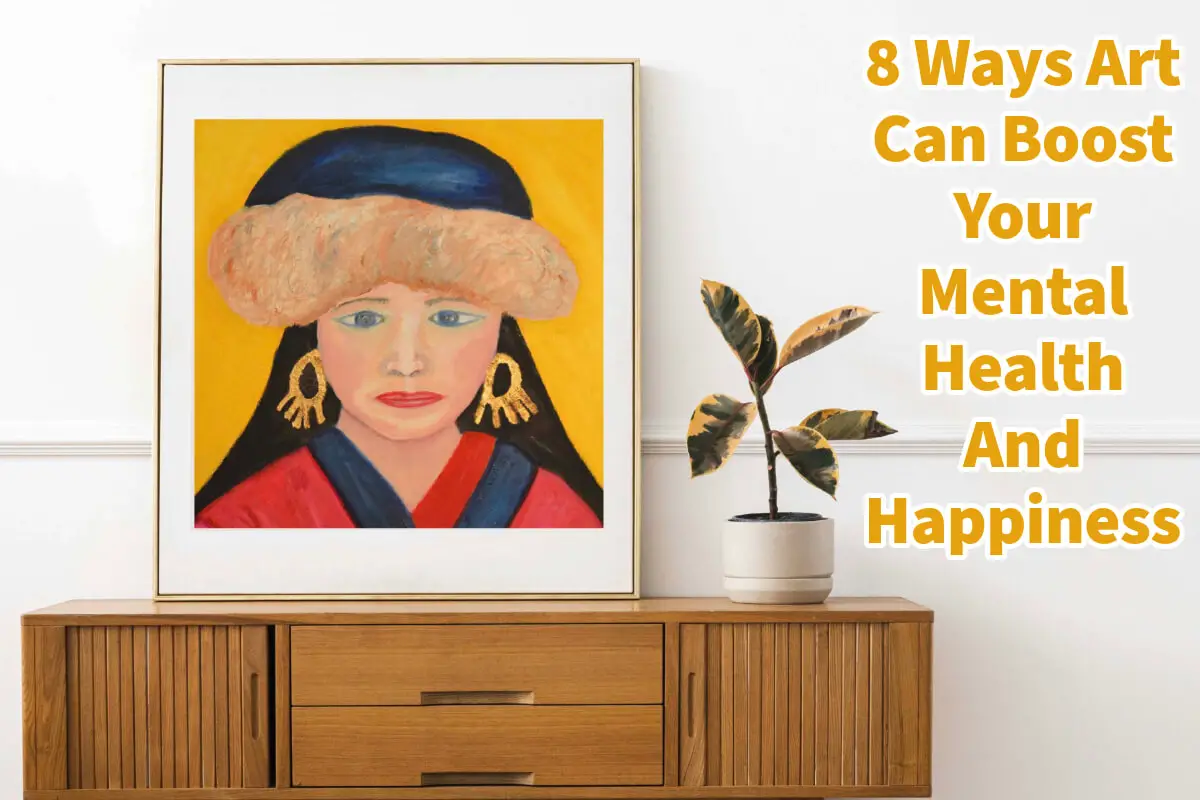Art, in its myriad forms, has been a source of comfort, inspiration, and connection for humanity since the dawn of time.
Today, as modern life becomes increasingly fast-paced and stressful, the value of engaging with art—whether through creating or viewing—has never been more relevant. Read on as we explore 8 ways to explore the profound impact art can have on mental well-being, emphasizing how it helps reduce stress, foster joy, and enhance mindfulness.
Table of Contents
- 8 Ways Art Can Boost Your Mental Health and Happiness
- 1. The Science Behind Art and Mental Well-being
- 2. Art as a Stress Reliever
- 3. Viewing Art as a Joyful Experience
- 4. Enhancing Mindfulness Through Art
- 5. Art as a Tool for Personal Growth and Self-Expression
- 6. Practical Ways to Integrate Art Into Daily Life for Better Mental Health
- 7. Real-life Stories of Transformation Through Art
- 8. The Takeaway: Embrace Art for a Happier, Healthier Life
- Listen To Our Podcast About How Can Art Boost Your Mental Health and Happiness? Below or By clicking here.
- Related Artwork
8 Ways Art Can Boost Your Mental Health and Happiness
In an age of prevalent stress and anxiety, finding effective ways to nurture mental health has become essential. Art offers a powerful avenue for enhancing well-being and happiness, whether through creation or appreciation. From reducing stress and promoting mindfulness to sparking joy and fostering self-expression, engaging with art can transform our mental landscape.
Read on as we explore eight key ways in which art can uplift your mental health. We will provide simple, practical insights into integrating art into your daily life for a happier, more balanced existence.
1. The Science Behind Art and Mental Well-being

Numerous studies have illuminated the connections between artistic activity and improved mental health. Creating or observing art uniquely stimulates the brain, activating regions responsible for emotional processing, pleasure, and reward.
a. The Brain’s Response to Art
Viewing or creating art triggers the release of dopamine, a chemical associated with pleasure and happiness. This reaction resembles what one might experience while listening to a favorite song or savoring a delicious meal. In particular, looking at aesthetically pleasing art can stimulate the brain’s ventral striatum, which is linked to feelings of satisfaction.
b. The Psychological Benefits
Research from the American Art Therapy Association (AATA) highlights that art therapy can significantly improve mood, reduce anxiety, and enhance the ability to manage stress. In a structured form, art therapy helps individuals process complex emotions, providing a non-verbal outlet for expression. This is especially beneficial for those who struggle to articulate their thoughts through words.
2. Art as a Stress Reliever
Modern life is fraught with stressors, from demanding work schedules to personal challenges. Art provides an escape from these pressures, allowing individuals to immerse themselves in a world of color, texture, and creativity.
a. The Meditative Process of Creating Art
Creating art can mirror meditation’s ability to cultivate focus and calm. When engaged in activities like painting, drawing, or sculpting, the mind often enters a state of flow—a term coined by psychologist Mihaly Csikszentmihalyi.
This state is characterized by intense focus, reduced self-awareness, and a deep sense of enjoyment. In this flow state, the brain’s prefrontal cortex—responsible for overthinking and worry—slows down, decreasing stress and anxiety levels.
b. Art and Cortisol Levels
A study conducted by researchers at Drexel University found that creating art significantly lowered cortisol levels, a biomarker for stress. Participants reported feeling more relaxed and uplifted after 45 minutes of non-directed artistic activity.
The reduction of cortisol not only helps with short-term stress relief but also contributes to long-term mental health by mitigating chronic stress, which is linked to depression and other mental health disorders.
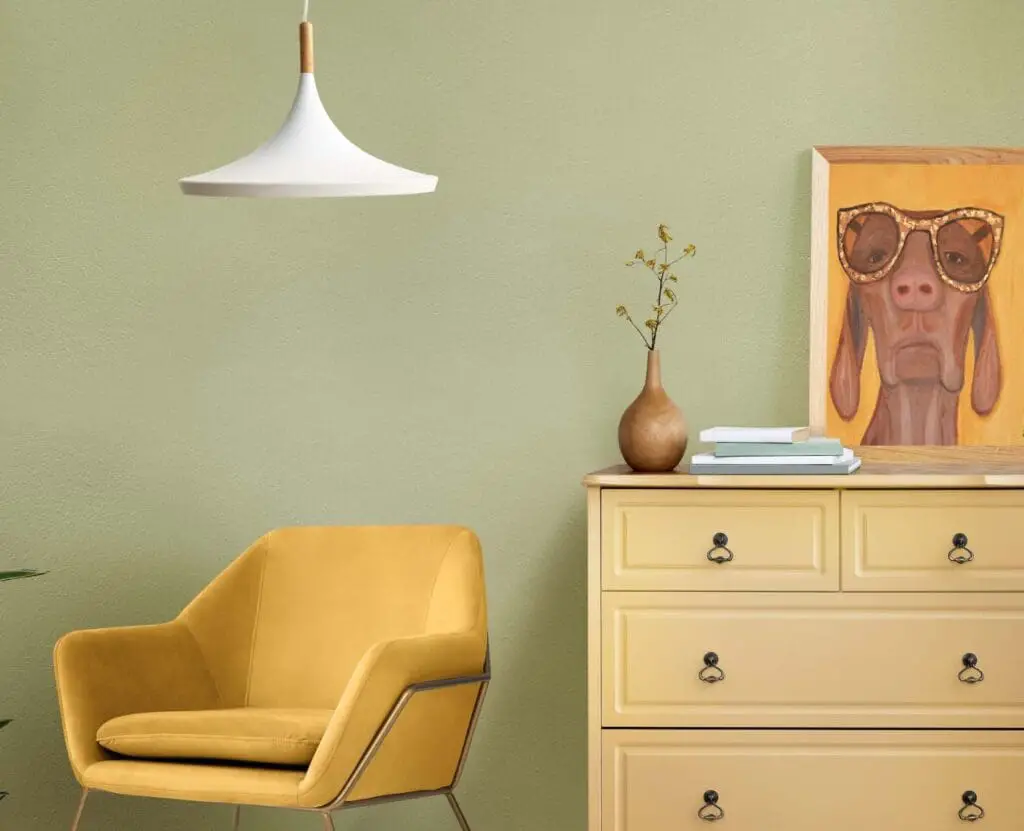
3. Viewing Art as a Joyful Experience
While creating art has undeniable benefits, simply viewing it can also profoundly impact happiness and emotional well-being. Art museums and galleries are often considered sanctuaries of culture and contemplation, and many individuals find solace in the experience of observing artwork.
a. Art as a Form of Visual Therapy
A study published in The Journal of Positive Psychology revealed that individuals who spent time in art galleries reported increased satisfaction and happiness. Various artworks’ colors, themes, and emotional undertones can evoke personal memories or aspirations, providing a sense of connectedness and joy.
b. Emotional Resonance and Empathy
Viewing art can also encourage emotional resonance and empathy. Art can tell stories, communicate feelings, and reflect shared human experiences. This connection helps viewers understand different perspectives and emotions, fostering a sense of empathy and reducing feelings of isolation or loneliness. Engaging with art in this way can be particularly beneficial for those who may be experiencing feelings of disconnection or depression.
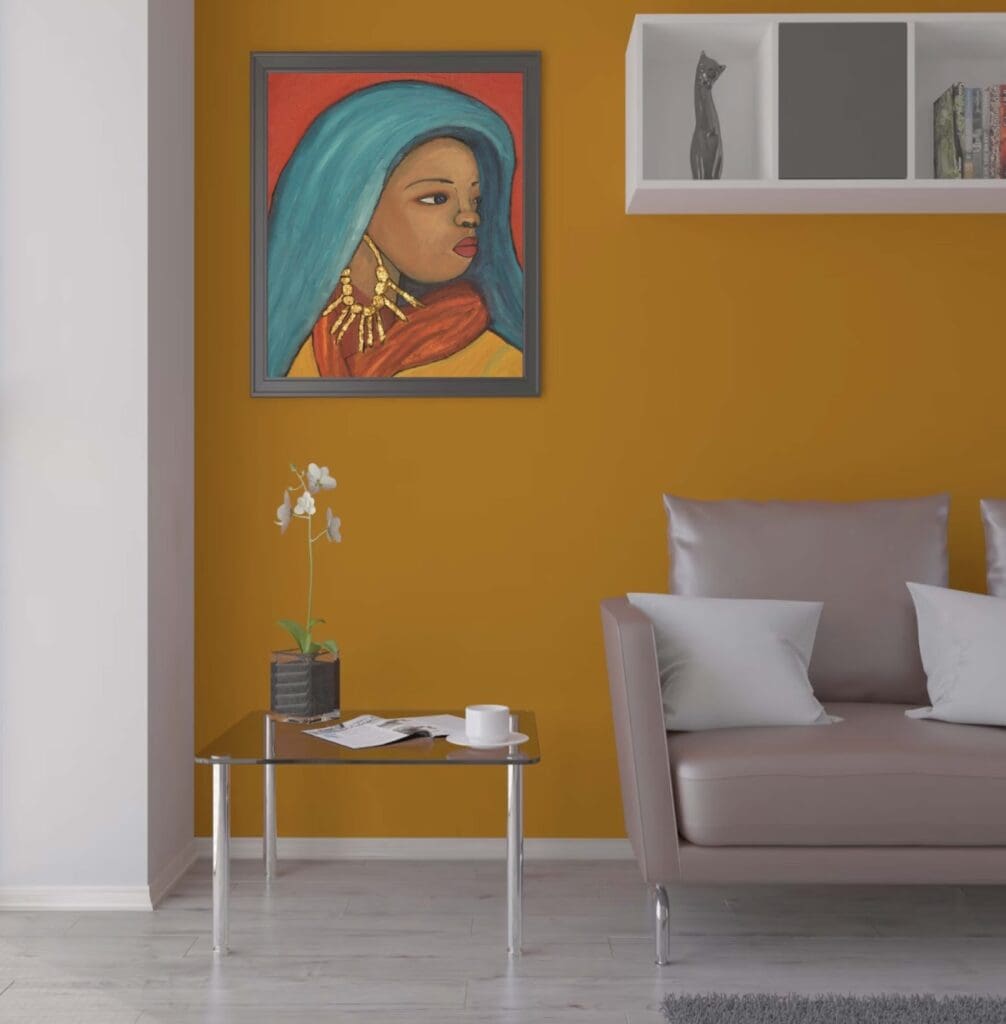
4. Enhancing Mindfulness Through Art
Mindfulness—staying present in the moment without judgment—is a well-recognized method for improving mental health. Art, both in creation and observation, is an effective tool for cultivating mindfulness.
a. The Role of Detail and Observation
Creating art requires attention to detail, whether mixing paint colors to achieve the perfect shade or sketching the intricate features of a landscape. This focus pulls the artist’s mind away from ruminative thoughts and into the present moment, facilitating mindfulness.
On the other hand, art viewing invites individuals to pause and observe without rushing. A slow, thoughtful engagement with a piece of art allows the viewer to notice subtleties that might otherwise go unnoticed—the brushstrokes, the interplay of light and shadow, and the emotions conveyed in the artwork.
b. Mindfulness-Based Art Therapy (MBAT)
Mindfulness-Based Art Therapy (MBAT) combines the principles of mindfulness and art-making to enhance mental well-being. MBAT has shown promise in reducing symptoms of anxiety and depression and is being integrated into wellness programs around the world. By incorporating mindfulness practices into the art process, individuals learn to shift focus from performance or outcome to the enjoyment and exploration of the creative process.
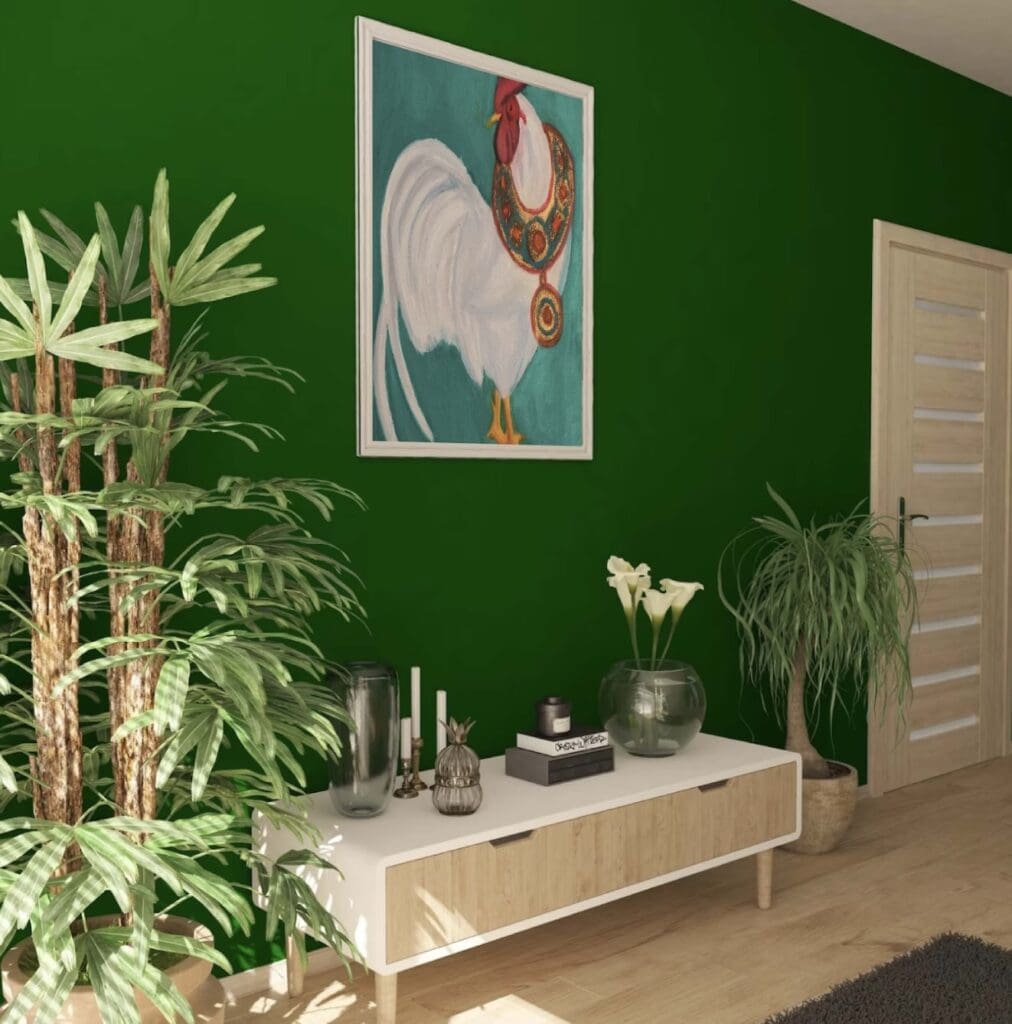
5. Art as a Tool for Personal Growth and Self-Expression
Art provides a unique platform for self-expression, allowing individuals to explore their thoughts and emotions in a way that goes beyond verbal communication.
a. Creative Expression and Emotional Release
Creating art can be cathartic, releasing emotions that are difficult to express verbally. This is especially important for individuals dealing with trauma or grief. By externalizing these feelings through art, individuals can process their experiences safely and structured. Using colors, shapes, and abstract forms can symbolize complex emotions, giving form to feelings that might remain buried.
b. Art as a Journal
Art journaling is an approach where individuals combine writing, sketching, painting, or collage to record their thoughts and experiences. Unlike traditional journaling, art journaling is not confined to words; it embraces images and abstract representations as an extension of inner dialogue. This practice can help individuals reflect on their day, set intentions, or work through challenges with a creative lens, promoting both mental clarity and emotional balance.
6. Practical Ways to Integrate Art Into Daily Life for Better Mental Health
For those new to art or who feel intimidated by creating, there are simple and practical ways to integrate art into daily life without formal training.
a. Simple Creative Activities
- Doodling or Zentangle: Engaging in simple line art or patterned drawing can be calming and help sharpen focus.
- Coloring Books: Adult coloring books have become famous for their stress-relieving effects, providing a low-pressure way to enjoy creativity.
- Photography: Capturing moments of beauty in the environment can help shift attention to the present and encourage appreciation for small details.
b. Incorporating Art Appreciation
- Visits to Art Galleries: Regular visits to local museums or galleries can be educational and uplifting.
- Virtual Art Tours: Online platforms now offer virtual tours of some of the world’s most renowned art galleries, making them accessible to those who cannot travel.
- Art Prints and Home Décor: Surrounding oneself with art at home can serve as a daily reminder of beauty and inspiration.
c. Group Art Activities
- Community Art Classes: Joining a class or workshop provides both a creative outlet and social interaction, which can reduce feelings of loneliness.
- Collaborative Projects: Participating in collaborative murals or group art projects can strengthen community bonds and foster a sense of belonging.

7. Real-life Stories of Transformation Through Art
Real-life examples abound of how art has transformed individuals’ lives. One story is that of John, a retired engineer who struggled with depression after leaving his career. He discovered painting through a community center class, and what began as a hobby quickly became his primary form of self-care. Through painting, John found a way to express emotions he had long suppressed, regaining a sense of purpose and joy in his daily life.
Similarly, Maria, who faced severe anxiety, started with simple adult coloring books. This small step evolved into exploring watercolors and eventually sharing her work on social media, connecting with a supportive network of fellow artists who encouraged her growth and boosted her confidence.
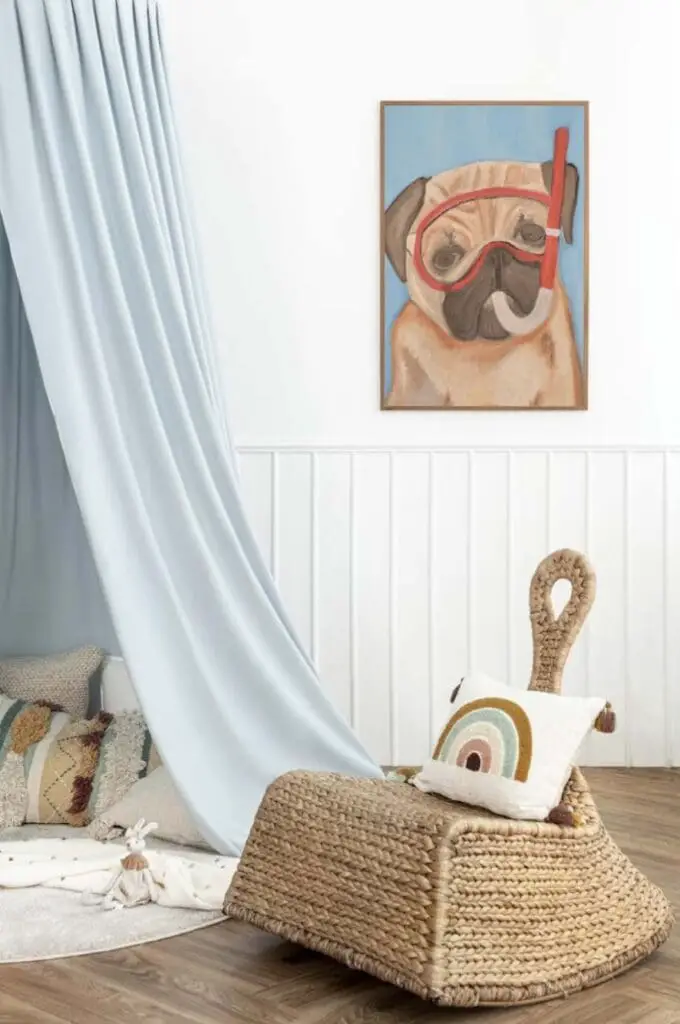
8. The Takeaway: Embrace Art for a Happier, Healthier Life
Whether picking up a paintbrush, sketching a quick doodle, or spending an afternoon at a museum, art is an accessible and powerful tool for boosting mental health and happiness. The benefits are not confined to professional artists or those with innate talent; they are available to anyone willing to engage in the simple act of creation or observation. Art’s power lies in bringing moments of peace, joy, and connection into everyday life.
By integrating even small moments of artistic activity or art appreciation into daily routines, individuals can foster a sense of mindfulness, reduce stress, and embrace a more enriched life. The journey to well-being is multifaceted, but with art as a companion, it can be more colorful and fulfilling.
If you’d like to bring one of my artworks or paintings into your home, you can purchase them directly through this link: https://anitalouiseart.com/buy/.
Listen To Our Podcast About How Can Art Boost Your Mental Health and Happiness?
Below or By clicking here.

Anita Louise Art is dedicated to art education, great artists, and inspiring others to find and create their art. We love art that uplifts and inspires. #ArtToMakeYouSmile! #ArtToMakeYouHappy!
If you want to see any of my art, you can find out more by clicking here. If you are interested in what inspires me and my paintings, you can discover more by clicking here.
We have a free newsletter and would love you to be part of our community; you can subscribe to the newsletter by clicking here. If you have any questions, I would be happy to talk to you anytime. You can reach me, Anita, by clicking here.
Subscribe to our Anita Louise Art YouTube Channel with great videos and information by clicking here.
Join us for our podcast “5 Minutes With Art.” just 5 minutes a week with us to discover and learn about great art and artists. You can find out more about our podcast by clicking here.
Related Artwork
Sisterhood, By Anita Louise Hummel, All Are Alike Unto God (2021)
Sisterhood by Anita Louise Hummel is a three-panel work of art that symbolizes that even if women worldwide speak different languages, have different skin colors – we are all sisters in Christ. The theme of togetherness or Sisterhood runs through this entire work of art.
You can find out more about Sisterhood; By Anita Louise Hummel, All Are Alike Unto God (2021) by clicking here.
From Ulaanbaatar, By Anita Louise Hummel, Painting of A Nomadic Woman
traveled to Mongolia and decided that I needed to paint a Mongolian woman. My painting entitled From Ulaanbaatar is a result of this trip.
From Ulaanbaatar is an oil painting by Anita Louise Hummel. The painting shows a nomadic woman dressed in traditional clothes. The painting uses bright colors and gold leaf for the earrings.
You can discover more by reading From Ulaanbaatar, By Anita Louise Hummel, Painting of A Nomadic Woman by clicking here.
Elder Koda, By Anita Louise Art, Vietnam Hanoi Mission Mascot
Elder Koda is a painting of one of my very dear furry friends – Koda. Koda has spent many days and nights staying at my house: I am proud to be called his Auntie Anita.
Elder Koda by Anita Louise Hummel is a painting of a purebred black poodle named Koda. Koda has lived the last three years in Hanoi, Vietnam, and has become the Hanoi Vietnam Mission mascot for The Church of Jesus Christ of Latter-day Saints.
You can find out more about Elder Koda, By Anita Louise Art, Vietnam Hanoi Mission Mascot by clicking here.

